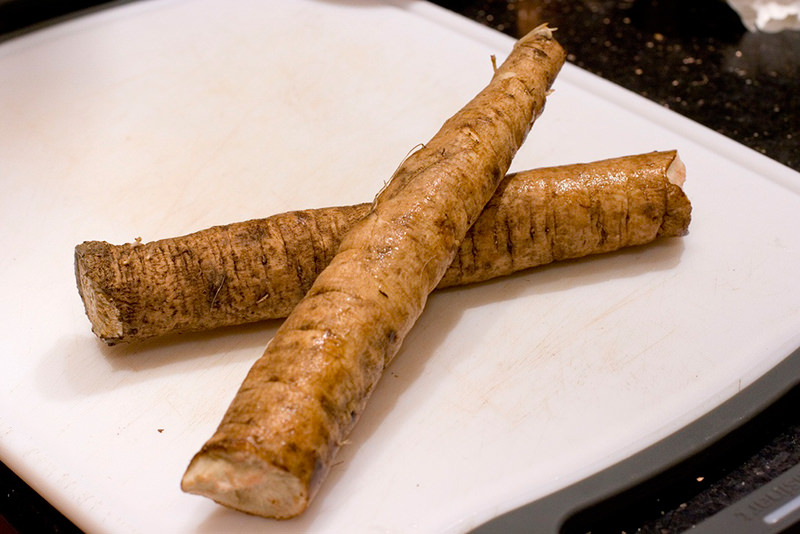
When spring arrives, the lure of green, growing things is strong. It’s what fills us with gardening fever and sets us to work in our greenhouses and windowsills on the first young seedlings. For me, this time of year sends me out into the yard and wild areas looking for fresh food. After the long winter where the frozen ground has prevented me from digging roots and the cold kept the greens hidden below the soil, I’m eager for something that doesn’t come from the grocery store.
It’s easy to get carried away. Just as you must limit access to lush, green pasture growth for the grazers on your farm, we must also practice moderation. It’s easy to get a belly-ache by overdoing greens in your diet. With the first glimpses of warm weather, many of us can get carried away and begin to wear summer clothes and eat lots of salads, but it’s important to remember that we are in transition. While the fresh green salads are a great meal option, they should make up only a small portion of your diet this time of year. In order to maintain balance in an imbalanced season, continue eating the warming soups and steamed greens of winter.
Right now is a great time to dig the roots that are the most fortifying. With the ground warming, the race is on to dig spring roots before they send up their leaves. There are four roots that I especially enjoy digging at this time of year.
Evening Primrose (Oenothera biennis)

Right now you will find the rosettes of the second-year evening primrose where these plants stood last year. There are two ways to enjoy them in a meal. After cleaning them up, cut away the greens. The root just below the soil line is a bit bulbous—cut it up to use like a radish on top of a salad or roasted in a vegetable medley.
Jerusalem Artichoke (Helianthus tuberosus)

My Jerusalem artichokes haven’t sprouted yet, so it is still a good time to dig them. These delicious tubers can be the star of any dish or used anywhere you would normally put a potato.
Dandelion (Taraxacum officinale)

The best dandelion roots for digging are 2 years old. This means you’ll find an established plant right now above ground. You’ll want to get them before they start to develop their flower buds. These roots can be diced and sautéed or cubed and added to soups.
Burdock (Arctium lappa)

Also called “gobo root,” burdock root is a delicacy. A quick search on the internet will result in a good selection of recipes, everything from pickles to appetizers and soups. The leaves on the second-year plants are just beginning to pop here in my garden, so they are ready to dig!
Preserving Your Roots
If you aren’t prepared to eat all the roots that you can dig, you can always dry some and use them for cooking or making medicinal teas later in the season. There will most likely be quite a bit of water content in your roots right now, so be careful. In the spring, we can’t get away with air drying—mold will surely set in.
For indoor drying, either cut your root in half down the middle or into slices, and then use a dehydrator or put them in your oven on the “drying” setting. If you use the oven you’ll need to put them on a porous rack or keep turning them so that air gets to all sides. Your herbs should dry within 24 to 48 hours and be brittle when they are finished.
Drying roots is a skill that takes a bit of practice, and you’re likely to fail at least once. Everyone has spent time and energy harvesting and drying, only to put them in bags too early. There is nothing more frustrating than to come across mold later. So, be sure you get your roots dry enough before storage and then don’t fret. If you’d rather be on the safe side, you can slice and freeze your roots. And if you mess up, don’t worry; all of these plants will be ready to try again in the fall!





2 replies on “4 Nutritious Spring Roots To Harvest”
[…] 4 Nutritious Spring Roots To Harvest […]
[…] Amazing Things You Didn’t Know About Mushrooms7 Radishes You Could Be Growing Right Now4 Nutritious Spring Roots To HarvestHow To Grow Cherry TreesAvoid Downy Mildew In Your Garden5 Flavorful Heirloom Tomatoes You Need To […]